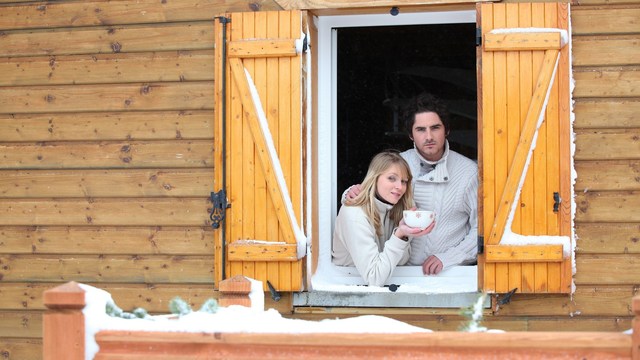 Auremar/PhotoSpin
Auremar/PhotoSpin
We've had ice, sleet, snow and frigid cold temperatures in abundance. One paralyzing winter storm after another will likely make the winter of 2013-14 one for the record books. With much of the country under layers of cold and bracing for more extreme weather, foodborne illnesses might not be on your radar.
Most people prepare for a storm by thinking about batteries, generators and blankets. But it’s important to know that floods and power outages from hurricanes, tornadoes, and winter snow storms can cut off water supplies and quickly contaminate food, according to the U.S. Food and Drug Administration.
Here’s some tips to protect yourself, your family, and your pets from foodborne illnesses.
Have On Hand Before The Storm:
Appliance thermometers
Thermometers in the freezer and refrigerator are the best way to help gauge whether or not food is at a safe temperature to eat after a power shortage.
Ready-to-eat foods
Keep a few days worth of ready-to-eat foods on hand that do not require cooking or cooling, in the event of a power outage. Store nonperishable food high on shelves, in case of flood.
Water frozen in small containers or one-quart plastic zipper bags
These containers of ice will help keep refrigerated food cold or can be melted if water supply is contaminated or cut off. Don’t fill the containers too full. Liquids expand when frozen and could split the bag.
Bottled water
A good rule of thumb is one gallon per day, per person, for at least three days. Any plastic or glass container that previously held food or beverages such as 2-liter soda bottles or water, juice, punch or milk jugs, also may be used.
Have extra water available for pets. Store containers in a cool dark place.
Manual can opener
This can opener could be all that stands between you and your tins of food in a power outage. The only power it needs is in your hands.
Bleach
Keep this within reach for disinfecting.
What to Do In Case The Power Goes Out:
Don’t put food outdoors in ice or snow.
This may seem counterintuitive, but it's a real safety measure. Wild animals may be looking for a meal, and when the sun comes out it may warm your food to an unsafe temperature.
Only open the refrigerator door when necessary.
The refrigerator will keep food cold for about four hours if it is unopened. If power is out for more than four hours, insulated coolers, frozen gel packs and dry ice will keep refrigerated food at or below 40 degrees F and frozen food at or below zero degrees.
Fifty pounds of dry ice should keep a fully-stocked 18-cubic-feet freezer cold for two days.
Keep your freezer full
A full freezer will hold its temperature for about 48 hours. It will keep food safely for 24 hours if it's half full.
Place frozen meat and poultry on a tray
This way, if they begin thawing, their juices will not drip on other foods and contaminate them.
When the Power Comes Back On
Check the temperature inside your refrigerator and freezer
If the freezer thermometer reads 40° F or below or still contains ice crystals, the food is safe to cook or refrozen. Always discard any perishable food (such as meat, poultry, fish, eggs or leftovers) that has been above 40° F for two hours or more.
Never taste a food to decide if its safe.
Don't put questionable food in your mouth. Rely instead on judging by its appearance and odor.
When in doubt, throw it out.
Perishable food such as meat, poultry, seafood, milk, and eggs not kept at recommended temperatures can make you sick — even if thoroughly cooked.
For more information on food safety in an emergency, check out these resources:
USDA: A Consumer’s Guide to Food Safety: Severe Storms and Hurricanes
Video Link: Guide to Food Safety During a Power Outage
FoodSafety.gov: In an Emergency
Lynette Summerill is an award-winning writer and watersport junkie who lives in San Diego with her husband and two beach loving dogs. In addition to writing about cancer-related issues for EmpowHER, her work has been seen in publications internationally.
Sources:
Protect Food and Water During Stroms. FDA.
http://www.fda.gov/Food/RecallsOutbreaksEmergencies/Emergencies/UCM2006925.htm
Emergency Water Storage. Homeland Security News and Information.
http://www.nationalterroralert.com/safewater
Power Outages:Key tips for Consumers About Food Safety. FDA.
http://www.fda.gov/Food/RecallsOutbreaksEmergencies/Emergencies/ucm077023.htm
Reviewed January 28, 2014
by Michele Blacksberg RN
Edited by Jody Smith






Add a CommentComments
There are no comments yet. Be the first one and get the conversation started!